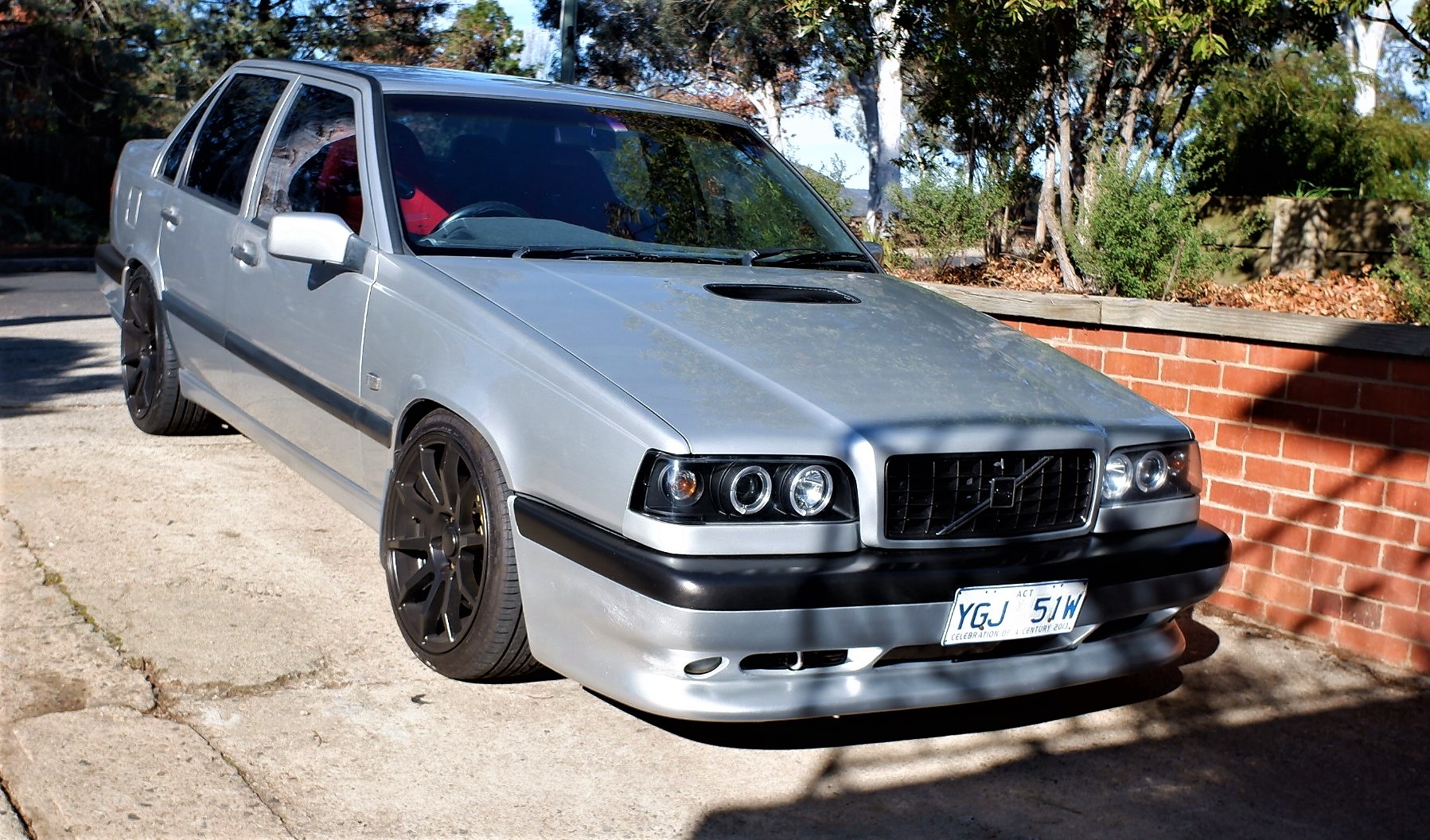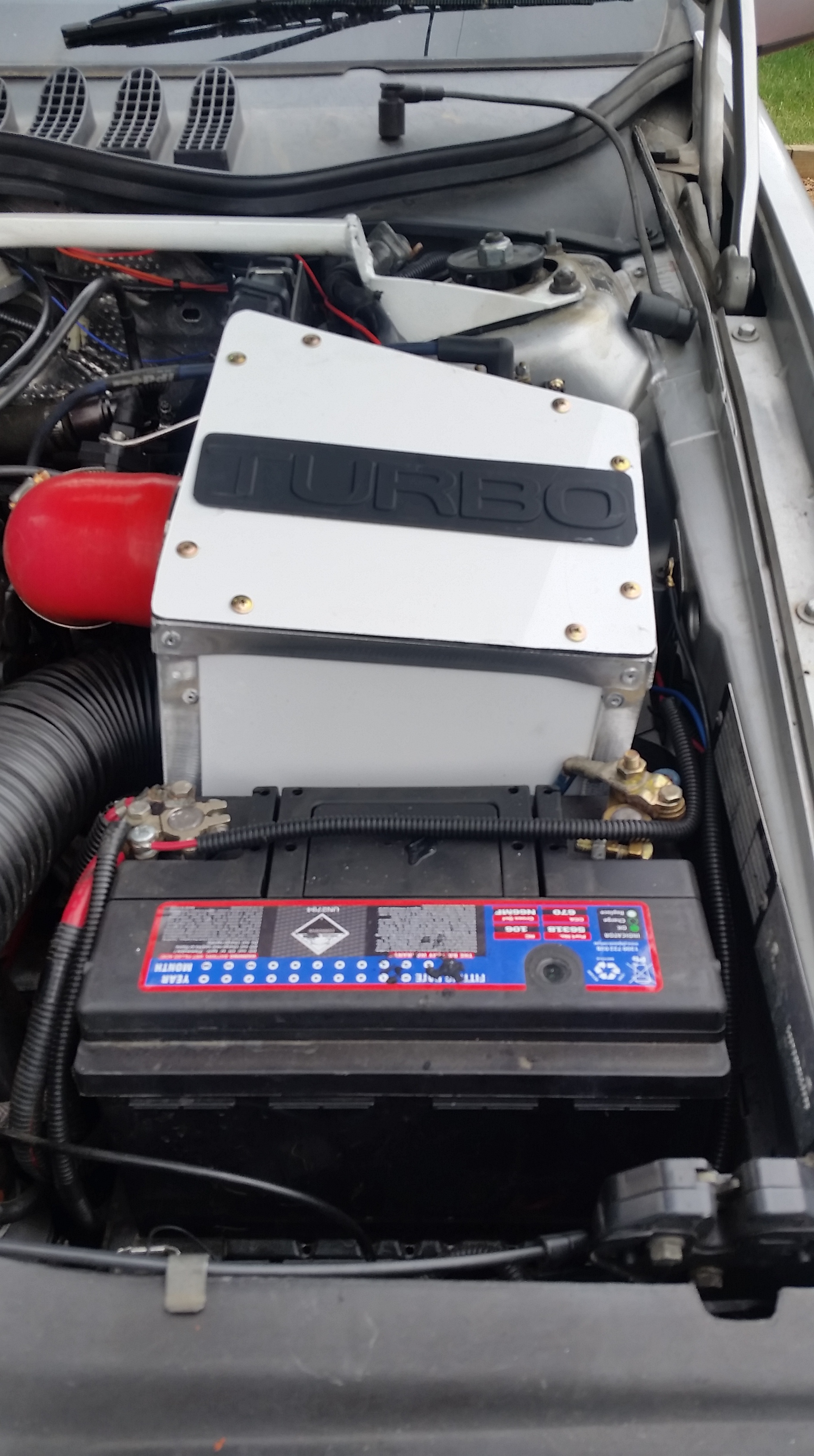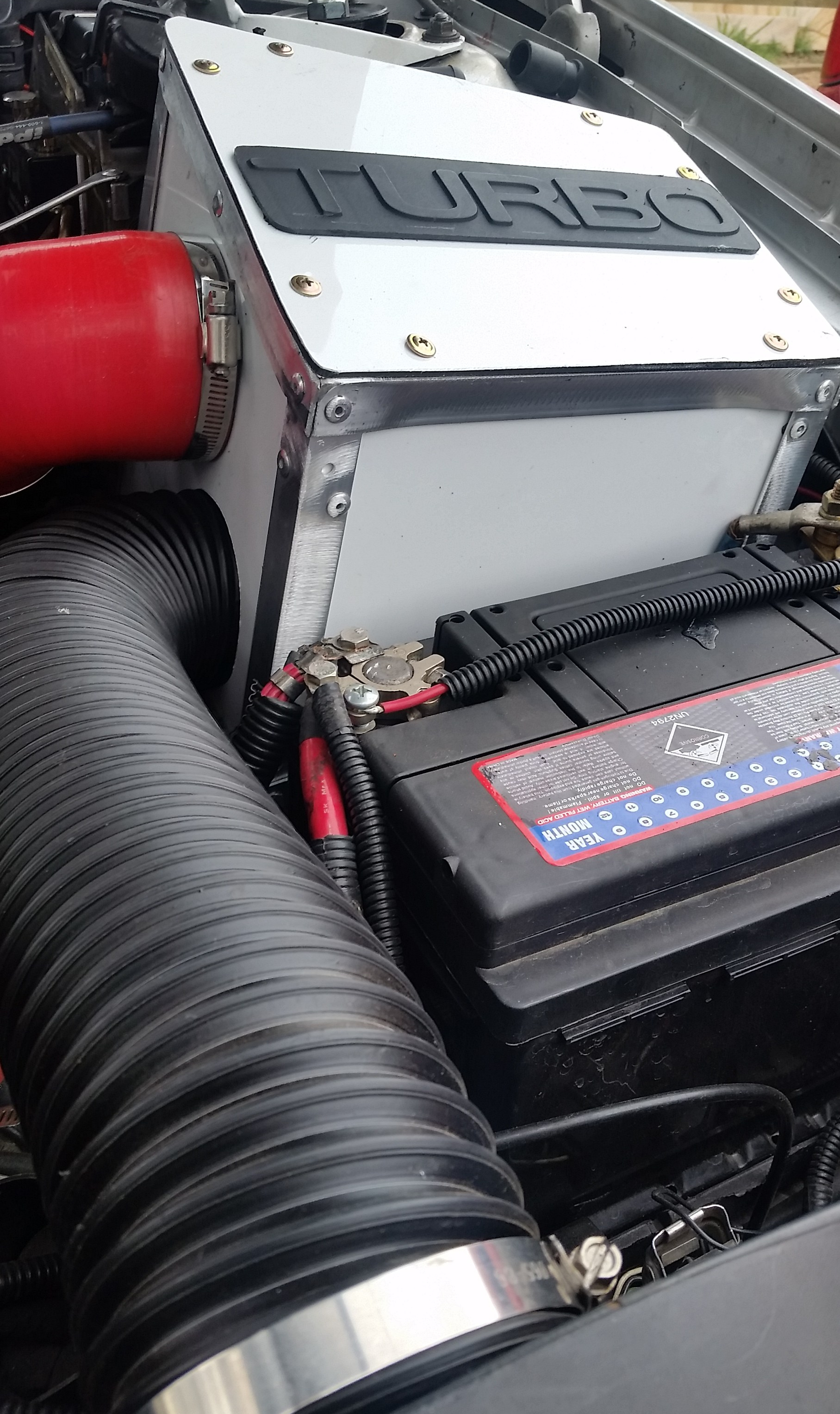It must be close to 2 years since we’ve undertaken an extensive maintenance program on Ovlov. Since that time we’ve addressed some minor issues and a couple of more major ones, like broken turbos, but invariably we get to a point where I have a list of items to address which are more than just a weekend job. As such my most productive approach is to take some time off work and smash it all out in one go. Now is that time!
The current maintenance list consists of some rather insignificant things, like painted brake calipers which are starting to look atrocious and more significant items, like clutch plate and gearbox replacement. It seems on this occasion in 2019, we’ve managed to accumulate a longer list than we ordinarily might. Perhaps I’ve been remiss and somewhat neglectful of her daily care over the past couple of years, but then again, maybe I’ve just been too busy working for the man, paying the bills and attempting to keep the wife happy! Some of those things are far more achievable than others.
I was trying to think of a word to describe this project and 2 came to mind, prototype and bespoke, neither word is fully appropriate but it’s been a process of building and modifying something which suits my personal driving style and interests. Slightly unique, a bit sleeperish, genuinely sporty to drive and a little old-school. It’s an ever evolving process but most of those aspects of her modification have been there since the outset. As such, we’ve tried a few things which didn’t work, we’ve fabricated a bunch of stuff to suit various mods and in the never ending quest for performance gains have added bits from other vehicles which were not originally intended for Ovlov This all adds somewhat to the complexity of this years maintenance program.
So, having said all that, what are we up for on this occasion:
 Engine Removal – Given a bunch of years of experience doing this it’s definitely worth mentioning how simple it seems to me now, to drop the engine out of this vehicle whilst attached to the sub frame. You can actually achieve this in half a day of solid work. The process I use is to lower the engine onto a flat trolley then lift the front of the vehicle up using an
Engine Removal – Given a bunch of years of experience doing this it’s definitely worth mentioning how simple it seems to me now, to drop the engine out of this vehicle whilst attached to the sub frame. You can actually achieve this in half a day of solid work. The process I use is to lower the engine onto a flat trolley then lift the front of the vehicle up using an  engine hoist and simply wheel the engine out into your work area. May as well take advantage of the modular design Volvo invested so significantly into with the 850 series models. On this occasion I will still need to lift the engine off the sub frame to remove the gearbox but again, from here it’s a 10 minute job. It really makes the whole engine maintenance process a lot simpler, especially ease of access to gearbox and clutch.
engine hoist and simply wheel the engine out into your work area. May as well take advantage of the modular design Volvo invested so significantly into with the 850 series models. On this occasion I will still need to lift the engine off the sub frame to remove the gearbox but again, from here it’s a 10 minute job. It really makes the whole engine maintenance process a lot simpler, especially ease of access to gearbox and clutch.

The new second-hand m66 gearbox
Gearbox – Yep, the original M66 fitted in 2017 has been getting a little noisier and although I can shove some additives in her, hot days invariably yield a kind of rattly growl when under load. Changing oil viscosity also effects the ease at which you can flick through the gears, particularly when cold. I can recommend the value of adding something like an 80w140 oil but even this fails to quieten her on a hot day now. Obviously something is failing and I’ve no idea what exactly. I feel sure I could have persevered with the old M66 for a while longer but when I spotted a local wrecker discounting M66 boxes from a couple of Ford Focus XR5’s (I think they call the Focus ST outside of Oz and NZ) I decided to snap one up. The M66 cost $250 for a 2010 model which is a pretty good deal and this is in part the reason for switching out the OEM M56 box back in 2017, spare parts availability. Thus far I’ve separated the box and installed the MFactory LSD. The box internals look great, though we won’t know fully til the rubber hits the road.

Sachs Left/M-Pact Right
Clutch Friction Plate – When we installed the M66 back in 2017, I chose the recommended Sachs SD 693 friction disk, which if I recall is originally designed to suit a Ford Probe. The clutch has worked very well especially given that we’re pushing a few Kw’s through it. My chief contention with this plate is the spring ra ttle which occurs at idle. If you want to see for yourself check out the vid here. Could be suitable for use as a tambourine in the local school band. Sounds ridiculous but yes, you can hear it and although it’s not horrifyingly loud, it’s notable and a little annoying. Given that I’m pulling the M66 out I may as well try an alternative option and therefore have chosen the M-Pact HD Multi-Friction Hi-Torque Assembly Disk (Sach disk Left in images and M-Pact Right in images – Available through Rock Auto) I like the theory behind this design, the design is a mix between high performance clutch plate and standard unit. God knows how much I hated the Spec Stage 3 high performance clutch plate that I tried in this vehicle a few years back. Endless shuddering on clutch release reduced drive-ability to crap status, especially in heavy traffic. I’m figuring we won’t see a repeat of this situation with the M-Pact design.
ttle which occurs at idle. If you want to see for yourself check out the vid here. Could be suitable for use as a tambourine in the local school band. Sounds ridiculous but yes, you can hear it and although it’s not horrifyingly loud, it’s notable and a little annoying. Given that I’m pulling the M66 out I may as well try an alternative option and therefore have chosen the M-Pact HD Multi-Friction Hi-Torque Assembly Disk (Sach disk Left in images and M-Pact Right in images – Available through Rock Auto) I like the theory behind this design, the design is a mix between high performance clutch plate and standard unit. God knows how much I hated the Spec Stage 3 high performance clutch plate that I tried in this vehicle a few years back. Endless shuddering on clutch release reduced drive-ability to crap status, especially in heavy traffic. I’m figuring we won’t see a repeat of this situation with the M-Pact design.
 Drive shaft – It’s definitely worth mentioning that you don’t need to throw out your driveshafts when the rubber boots split. I purchased this driveshaft from Volvo about 7 years ago for around $450 dollars and as such it’s a quality unit. Yeah I know, $450 is ridiculous but it was moments like this which drove me to get more involved in Ovlov’s maintenance and reduce those ridiculous Volvo factory expenses. Driveshafts can suffer damage which causes them to be out of balance but generally speaking if you maintain them this shouldn’t occur. I repaired this shaft with a universal Ebay boot kit which cost me something like $30. Of course you can buy aftermarket shafts online but you can’t always be too sure of the quality. In the past I have snapped a driveshaft, subpar quality from Ebay!
Drive shaft – It’s definitely worth mentioning that you don’t need to throw out your driveshafts when the rubber boots split. I purchased this driveshaft from Volvo about 7 years ago for around $450 dollars and as such it’s a quality unit. Yeah I know, $450 is ridiculous but it was moments like this which drove me to get more involved in Ovlov’s maintenance and reduce those ridiculous Volvo factory expenses. Driveshafts can suffer damage which causes them to be out of balance but generally speaking if you maintain them this shouldn’t occur. I repaired this shaft with a universal Ebay boot kit which cost me something like $30. Of course you can buy aftermarket shafts online but you can’t always be too sure of the quality. In the past I have snapped a driveshaft, subpar quality from Ebay!
As well as the above, a couple of issues which were noted when she was being driven were a knock in the front suspension over certain types of bumps and undulations and a whine from the cam belt area which tended to get louder on a hot day. Therefore we’ll replace strut mount tops, water pump, cam belt and associated bearings and pulleys.
In the interest of maintaining her outward facade we’ll repaint the bonnet and front bumper/air dam. And in like fashion, to maintain her inner appearance I’ve replaced the lining on the roof, which had been sagging for several years.
I also intend to replace the cam timing sensor and Lambda sensor. This car has only ever left me stranded on one occasion and this was due to a failed cam sensor. I’ve got into the habit of replacing this every few years. Probably not warranted and I guess I could always keep a spare in the glovebox. As for the lambda sensor, they seem to throw fault codes every couple of years and this may be the result of the modifications and associated performance gains, who knows. Either way, I don’t want to take any risks with regard to Air Fuel sensing.
At the conclusion of all this, a well earned polish!
I think that’s about it for now and I’ll add some other pics to this post as we progress. Happy modding!
Today’s job 17th April – Repaint the front air dam – I decided to strip this back using paint stripper on this occasion. This makes the whole process quite quick but you need to be aware that paint stripper will soften the plastic itself if you leave it on for too long. This is nothing serious but will require some sanding before you put on your Plastic Primer Filler.

Air Dam with Paint Removed

Air Dam Prepped

Plastic Primer Filler Applied – Look at the beautiful 850R in the background!

Top Coat Applied

Looking nice and shiny
18th April – Finished refitting the roof liner. Not quite perfect but a heck of an improvement on the old.

Replaced the roof lining….finally!

You can pick up some roof liner material from Ebay for around $70AU, then you’ll need a couple of cans of spray contact adhesive.
19th April – Tried to make some headway with the bonnet/Hood respray. Decided to try and do the job right this time around by starting the job off in bare metal. Stripping back the original Volvo paint was quite a task and required around 2 litres of paint stripper as well as some scraping and sanding. Thus far we’ve applied the undercoat, base coat and 2k clear coat. We are yet to cut and polish the clear coat and although not perfect, am fairly happy with the finished product thus far.

Bare metal Respray : This is a replacement bonnet I picked up for $50. Has a few small dings to repair but overall quite good.

Base coat complete

Top Coat Complete – You may note that I’ve recut a slightly different shape for the vent on this one.
20th April – Only a couple of jobs completed today.

New cam belt, tensioner, pulley bearings and water pump.

Strut Mounts and Bushings replaced
24th April 2019 – I’ve been continuing the makeover theme for the last couple of days. I thought I’d have a go at improving the horribly discoloured and scratched bumper. I’m not a fan of painting bumpers as the paint invariably chips or flakes off so in that light I thought I’d have a go with one of the new rubber style plasti dip paints. Foliatec paints are a German product with a decent reputation so while I’m dipping my feet in the water so to speak, I’ll have a go on the rims as well. This stuff is super easy to apply and I’m just hoping that the paint proves reasonably durable.

Stock black rim (right) and Foliatec Anthracite grey rim (left)

Freshly painted Foliatec Anthracite Grey rim

Reassembled front bumper/spoiler with Foliatec Anthracite Grey plastic/rubber spray.

Foliatec Anthracite Grey – Trying to show the finish in the light. It’s like a semi gloss metalic style finish.

I even gave a coat of the anthracite to the grille.
26 April ’19 – Today I’ve pretty much completed cutting back the clear coat and polishing the bonnet. Overall I’m happy with the completed work though it is far from perfect. Ended up with some very light tiger stripes, but only visible in certain light. If I showed you the bonnet I’ve been using for the last 3 years you’d understand why I’ll be perfectly happy with this attempt. Have to add, that there are some great 3M cutting and polishing disks these days!
 16th June – Ok so things have moved on slowly but we’re getting close now. The car is 95% reassembled and we’re ready to finish assembling the front spoiler and bumper.
16th June – Ok so things have moved on slowly but we’re getting close now. The car is 95% reassembled and we’re ready to finish assembling the front spoiler and bumper.
 I’ve spent a greater amount of time on this occasion to tidy up the engine bay. She’s still a bit cluttered but at least you won’t find too many electrical wires running here there and everywhere.
I’ve spent a greater amount of time on this occasion to tidy up the engine bay. She’s still a bit cluttered but at least you won’t find too many electrical wires running here there and everywhere.































































